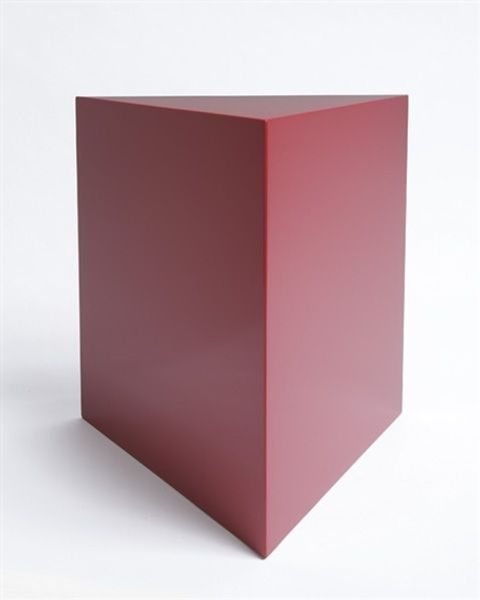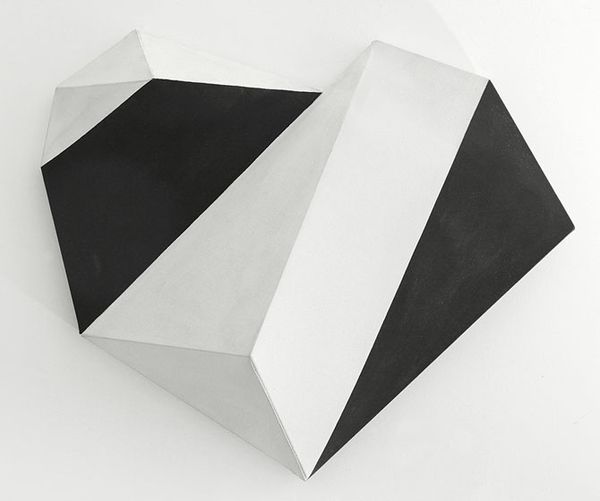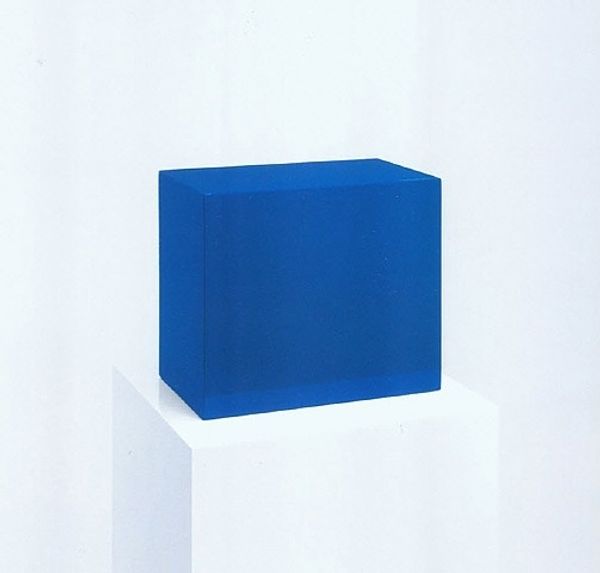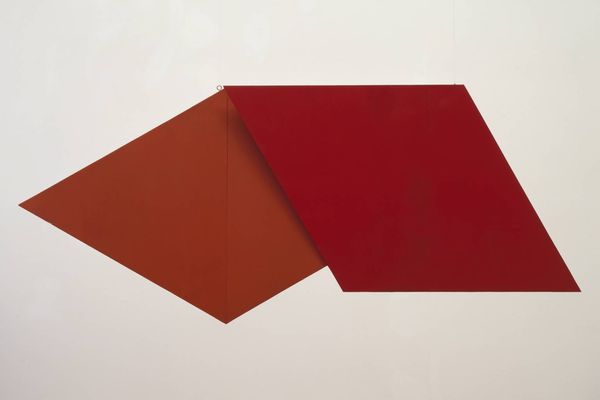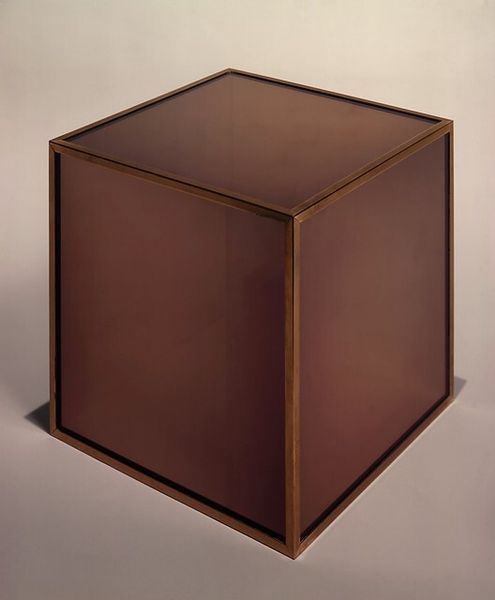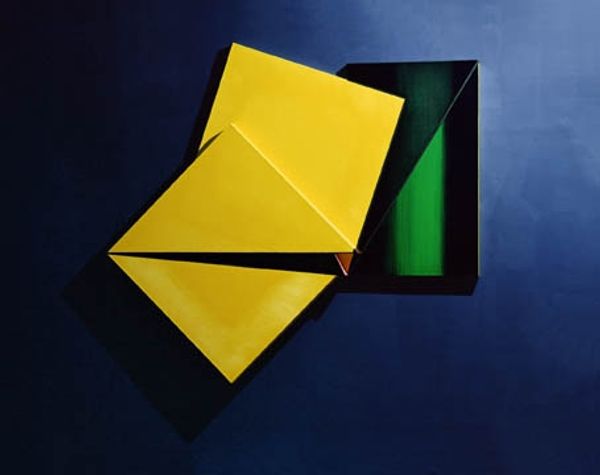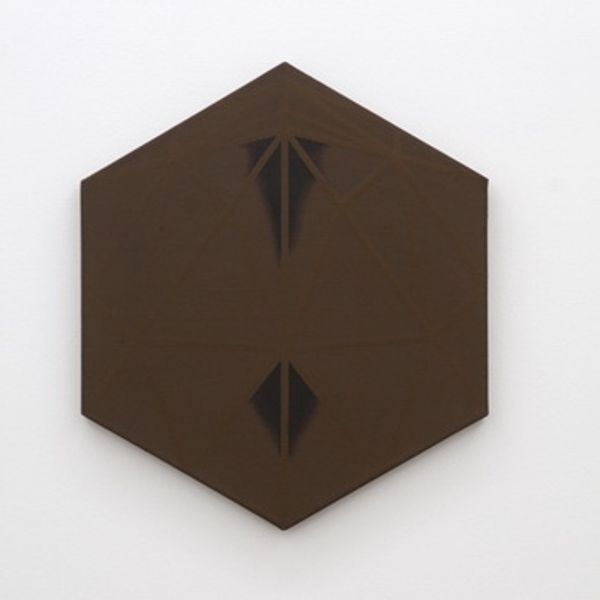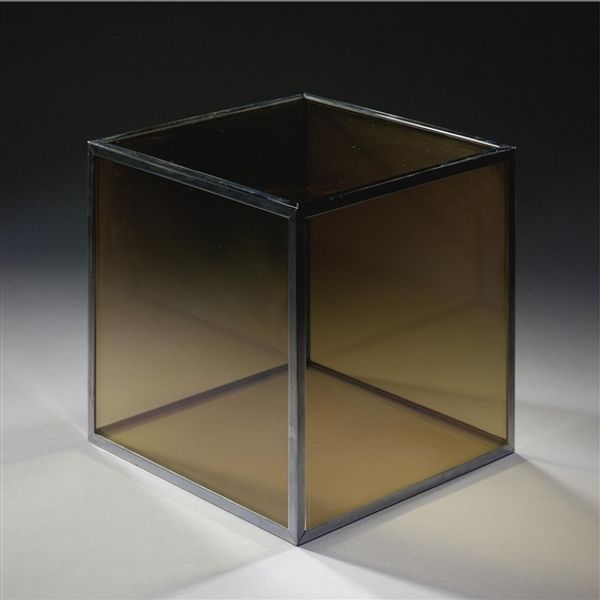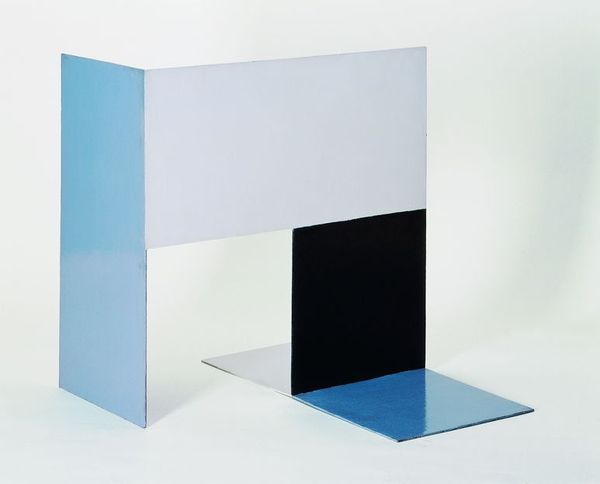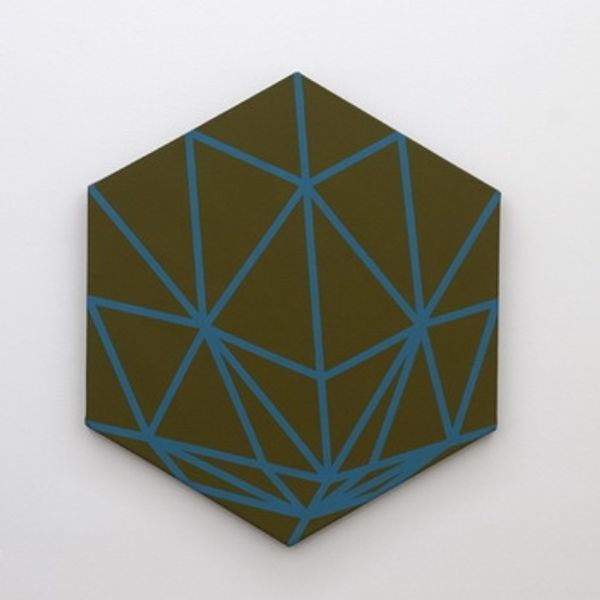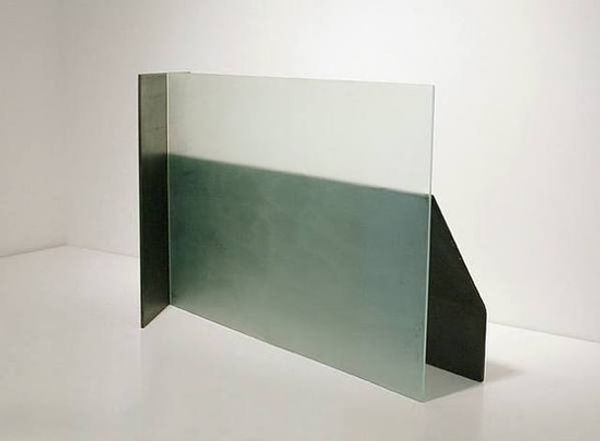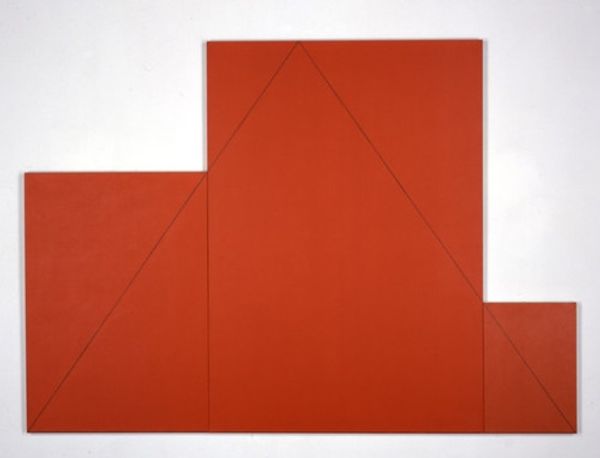
mixed-media, paper, sculpture
#
pop art-esque
#
abstract-expressionism
#
mixed-media
#
conceptual-art
#
minimalism
#
colour blocking
#
paper
#
form
#
bold defined shape
#
geometric
#
sculpture
#
geometric-abstraction
#
bold colour
#
modernism
Copyright: Rodolfo Arico,Fair Use
Editor: This is Rodolfo Aricò’s "Scatola, angolo verde" from 1968. It seems to be a mixed-media sculpture, mostly in green, with some components in paper. The work definitely has a minimalist feel. How do you interpret this piece? Curator: Aricò's green box engages with the formal concerns of minimalism, certainly. However, to fully grasp its impact, we should place it within the socio-political ferment of 1968. This was a year of global protest and questioning of established power structures. So, isn't it interesting how Aricò takes the hard-edged geometry, typically read as detached and purely formal, and subtly subverts it? What do you think about the assertive yet oddly vulnerable projecting triangular form? Editor: It looks almost like a hidden element emerging, breaking through. Curator: Exactly! In that era artists strived for dematerialization, while simultaneously working with raw physicality and rudimentary constructions. Aricò is very engaged with the visual experience and perception of space and volume in colour, whilst pushing at the boundaries of accepted practice. Consider the way geometric abstraction often enforced a kind of visual hierarchy, privileging certain viewpoints. Aricò’s sculpture destabilizes that. Does it perhaps challenge notions of rigidity? Does it subtly hint at a hidden agency pushing against confinement? Editor: I see your point! Considering the time it was made, the simplicity could also be a powerful statement. Curator: It’s that tension, the seeming simplicity that allows for layers of interpretation. This is why Aricò still speaks to us today! Editor: Thanks for providing this context; it's helped me look beyond the pure geometry. Curator: Absolutely. It’s crucial to remember that even within abstraction, artists are responding to, and shaping, the world around them.
Comments
No comments
Be the first to comment and join the conversation on the ultimate creative platform.
